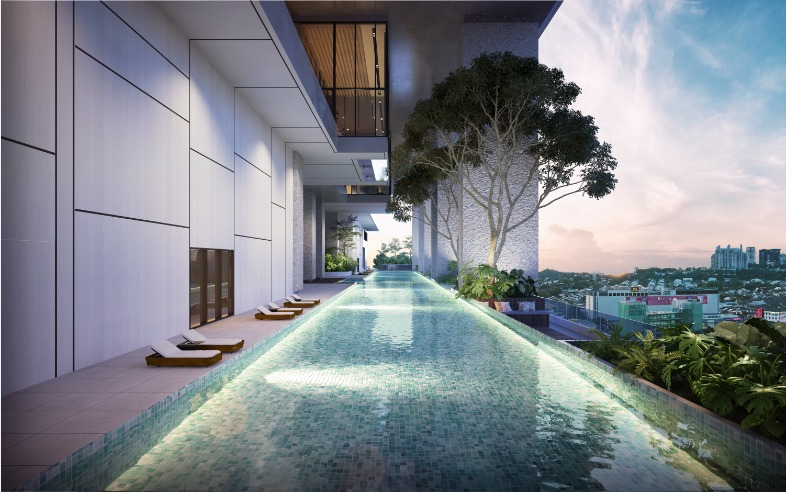
DESPITE the rather tepid performances, so far, for newly listed SunREIT and CapitaMalls Trust Malaysia earlier this month, we believe real estate investment trusts (REITs) are still attractive investment alternatives for the more risk-averse and yield-seeking investors.
We are going to highlight five of the larger REITs currently listed on Bursa Malaysia. All have quite different assets portfolio that will appeal to different investors.
Al-Aqar KPJ REIT
The Al-Aqar KPJ REIT, which boasts of the first Islamic healthcare REIT in the world, was listed on Bursa Malaysia in August 2006.
Its initial investment comprised of six hospital buildings worth a collective RM481 million that were bought from KPJ Healthcare, one of the country's largest private healthcare providers, and which were then leased back to the latter. The lease agreements are for a period of 15 years with the option to renew for a further 15 years, which underpin the relative resilience in Al-Aqar KPJ REIT's income stream.
Since then, the Al-Aqar KPJ REIT has been one of the most aggressive in terms of expanding the assets under its management through new acquisitions, primarily within the healthcare industry.
In 2008, it completed the acquisition of five additional hospital buildings valued at RM170 million. On its most recent expansion trail, the Al-Aqar KPJ REIT added seven hospital buildings, including the just-completed KPJ Tawakal Specialist Hospital, as well as a nursing college and a commercial development property.
These acquisitions lifted the total value of its investment properties beyond the RM1 billion mark, more than doubled from when the REIT was listed about four years back.
These purchases were funded through a combination of borrowings and the issuance of new units. Total units in circulation have now increased to 580.2 million, up from the initial 340 million units. Meanwhile, gearing stands at roughly 44%.
Al-Aqar KPJ REIT's assets base will increase further upon the completion of its latest proposal to buy six additional property assets — two of which are hospital buildings in Indonesia — valued at RM302.9 million.
The longer-term prospects for the Al-Aqar KPJ REIT appear bright. The healthcare industry is expected to register strong and sustainable growth for the foreseeable future, both from domestic demand as well as the growing attractiveness of our country as a destination for medical tourists.
Steadily rising demand and costs of healthcare services would, in turn, support gradual rental income growth under the trust's long-term lease agreements — and should translate into progressively higher income distribution to unit holders. Indeed, rental incomes for the Al-Aqar KPJ REIT are expected to be relatively recession proof.
The trust forecasts a distribution of eight sen per unit for 2010, which will increase gradually to 8.33 sen per unit by 2012. For the current year, an interim distribution of 4.43 sen per unit was paid in June 2010.
AmFIRST REIT
As the name suggests, AmFIRST Real Estate Investment Trust is sponsored by the AmBank Group, which is also a substantial unit holder. It is among the few REITs with total assets under management valued at over RM1 billion currently, consisting of properties in the office, retail and hotel sectors.
AmFIRST was listed on the local bourse in December 2006 with an initial four properties — Bangunan AmBank Group, Menara AmBank, AmBank Group Leadership Centre and Menara Merais — worth some RM486 million.
Its portfolio was then expanded to include the Kelana Brem Towers and Summit Subang USJ in June 2007 and March 2008, respectively at a total cost of RM356 million.
The value of its properties, including enhancements and revaluation gains, currently stands at just over RM1 billion. Office space currently accounts for the biggest slice of its portfolio in terms of assets value, net lettable area and revenue.
As with all REITs, the primary risk is rental rates, which are determined by factors like location, new supply into the market, tenant mix, management and maintenance.
On the positive note, rental rates for offices have, historically, been fairly steady although anticipated new supply will probably keep a lid on future hikes. Similarly, rentals at shopping centres have maintained an uptrend over the past 15 years, despite the completion of many mega malls during the period.
Additionally, AmFIRST's income is likely to remain stable given that the AmBank Group accounted for about roughly 41% of the trust's total rental income in the last financial year ended March 31, 2010.
We will highlight three other REITs in our next article.
SHARE





